SCHOOLS OF THE FUTURE 2018
The title of our lecture was: "Huli: Gaming as a Vehicle for Community Healing." The expectation was to give a talk about how our game "Huli" served as a simulation of community healing. Through gameplay one could see the possibilies of regenerating the psyche of the landscape.
History
Rather than have an audience stare at me for an hour while I go through keynote slides, I imagined a more immersive & interactive experience. I wanted the participants to step into the world I created, walk around and feel the struggles of my community, then collectivly solve the challenges we face on the west coast of Oahu.
The Experiment
The original goal was to craft a life-size analogue representation of our Huli game.
Huli game overview
Before going over the presentation, I thought it would be useful to give you a bit of back ground on what our Huli is about.
Huli is a board game about practitioners in Hawaii that heal communities through cooperation.
Mechanically, the setting of the game takes place on the Wai’anae coast of Oahu. From Kahi Point to Makaha Surfing Beach, the board lays out to scale the topology of the coast. The coast is then represented by locations and landmarks. These locations were identified by our students. Some locations are local memorial locations, like beach locations or hangout spots known only by the locals. Other locations are sacred locations named by our ancestors. Other locations represent outside investments or influence on the coast, churches or shopping malls, for example.
Players take on the roles of heroes of the community (Konohiki, Kumu,Mahi'ai, Lawai’a) who collaborate turn by turn to remove Eha from the locations. If at the end of a turn, a location has at least one Eha, players lose as there is too much anguish in the community. If, however, the players are able to remove all Eha from the board, the players win immediately.
Board game to life-size production
First, we need to start with the most difficult challenge, the board. How would we be able to represent the Waianae coast in a life-size three dimensional space? Influenced by Michelle Gondry, I decided to use large card board boxes as the medium to create our mountain range. This would be the frame for our game. All other components would be placed within that frame.
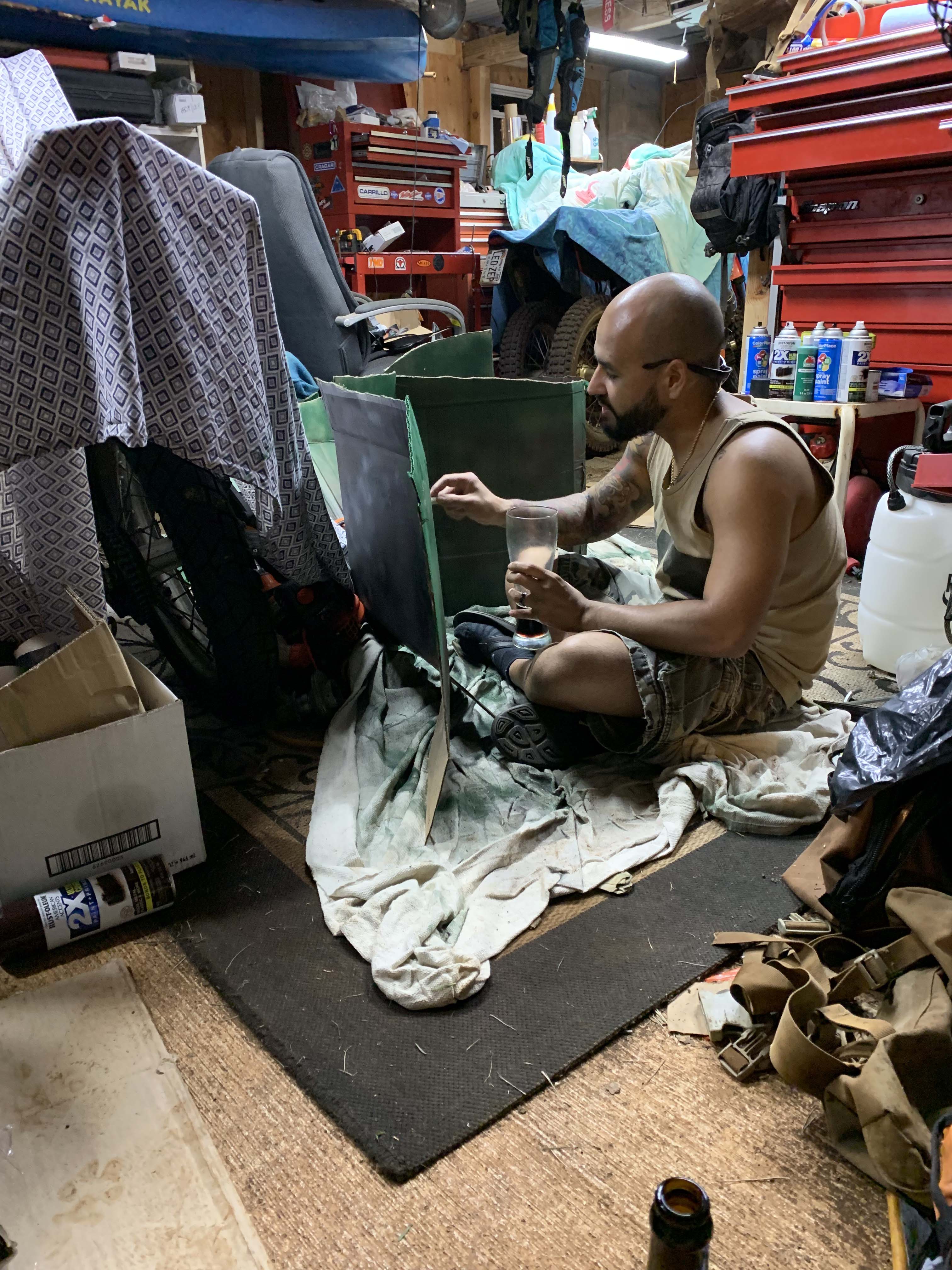
Second, we needed a representation of Eha that appear in our community. We decided to create signs that participants would hold up at various locations. The locations would be determined by events in the game. Signs represent issues that the coast is facing. These issues were thought of by my students. For example, crime, lack of mentors, devaluation of indigenous teaching or poverty.
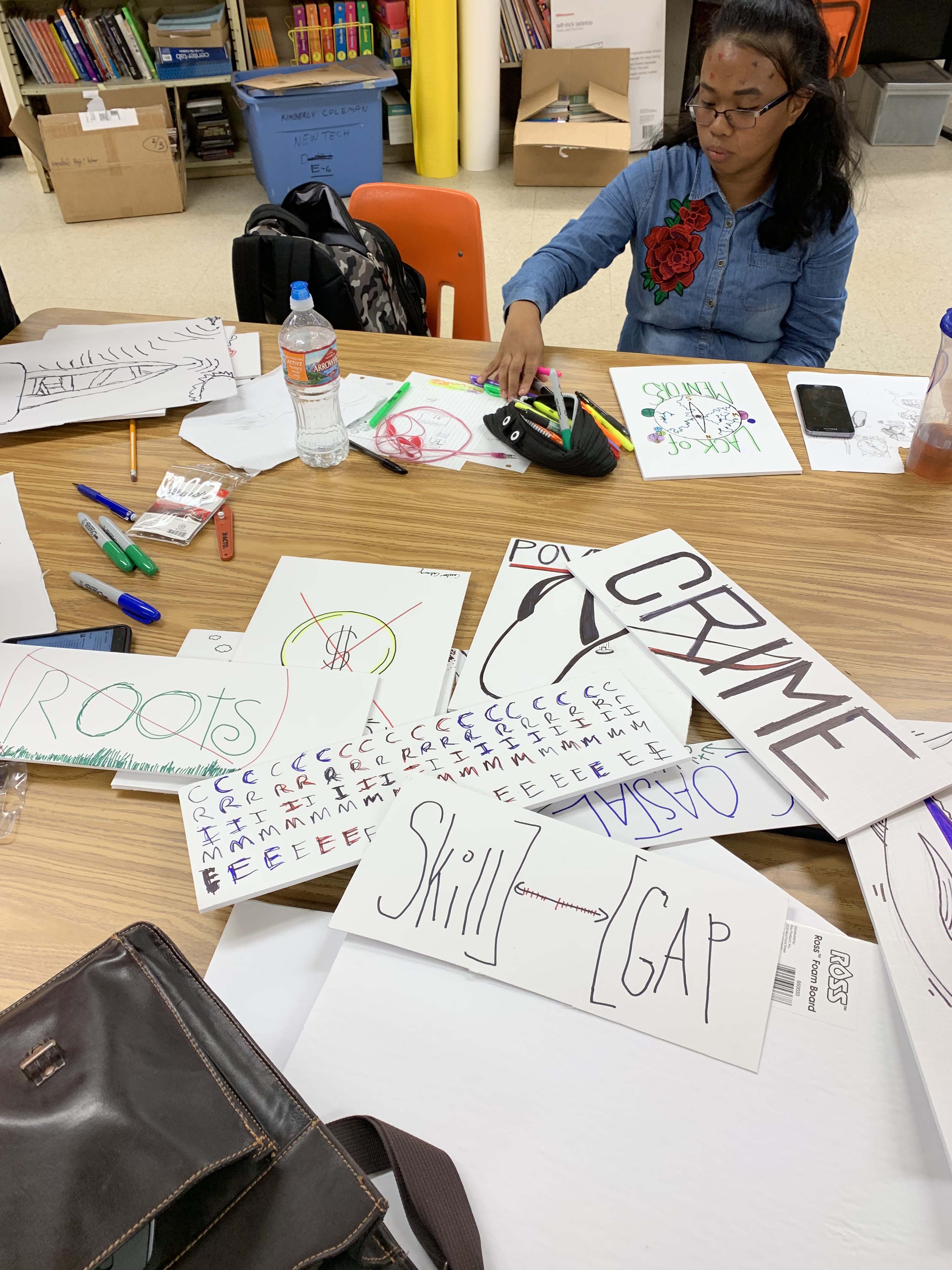
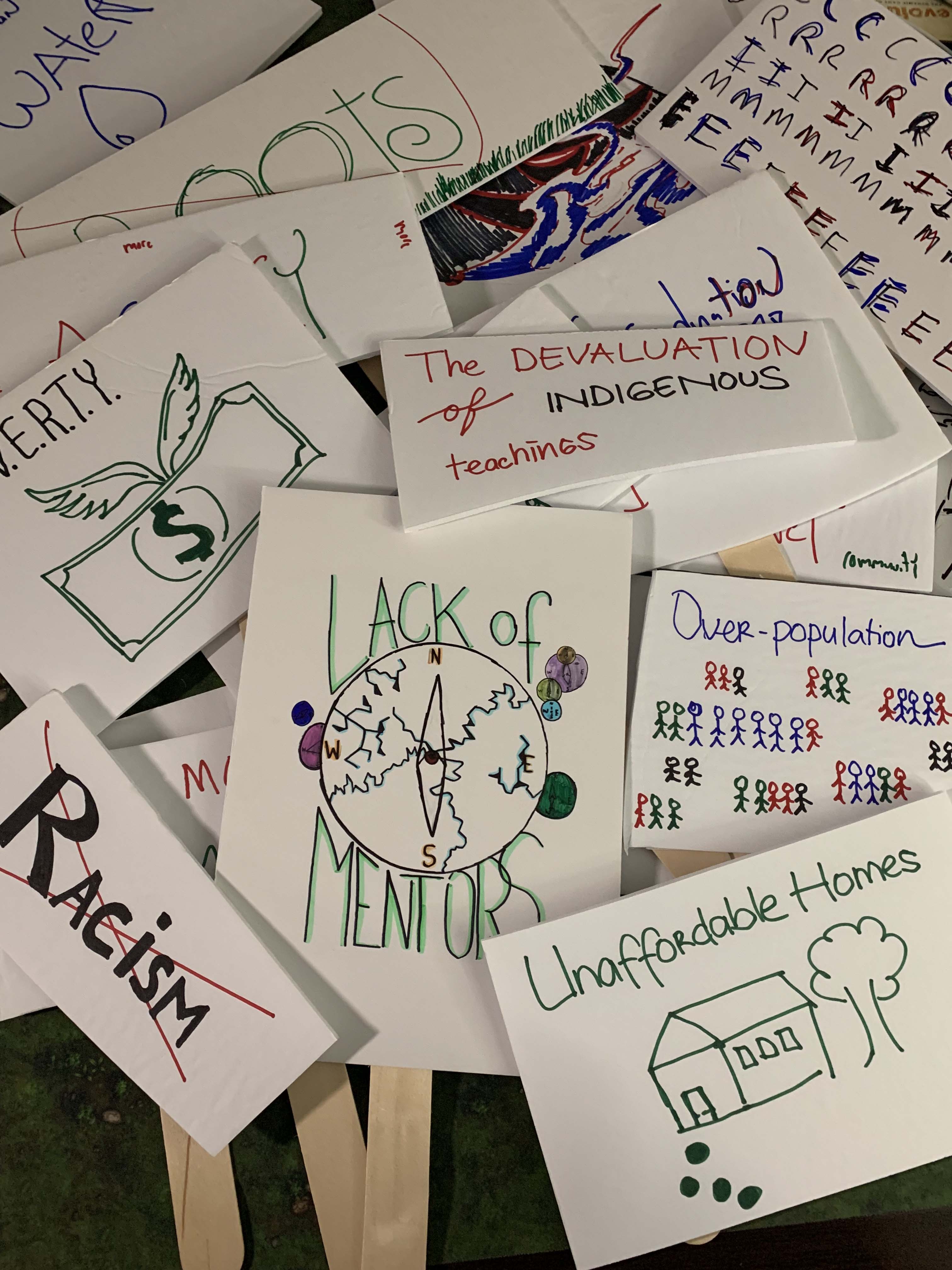
Eha would be distributed randomly at the beginning of every round. Participants (who were not heroes) would pick up a sign and go to specific locations on the board that represent the plaguing issue in that area on the coast.
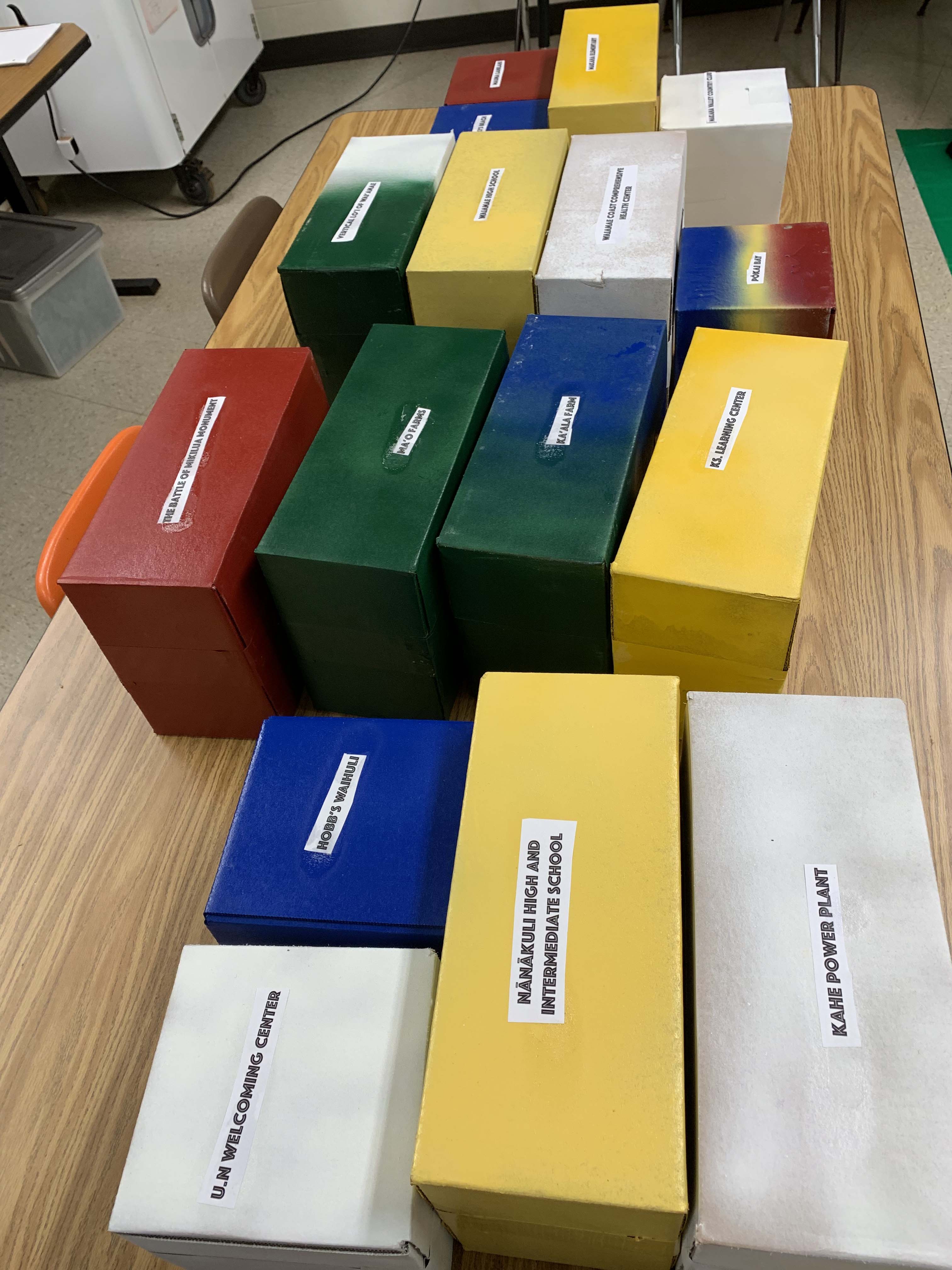
Finally, we needed to somehow represent the four characters of Huli or the heroes of our game and how they would interact with the environment.
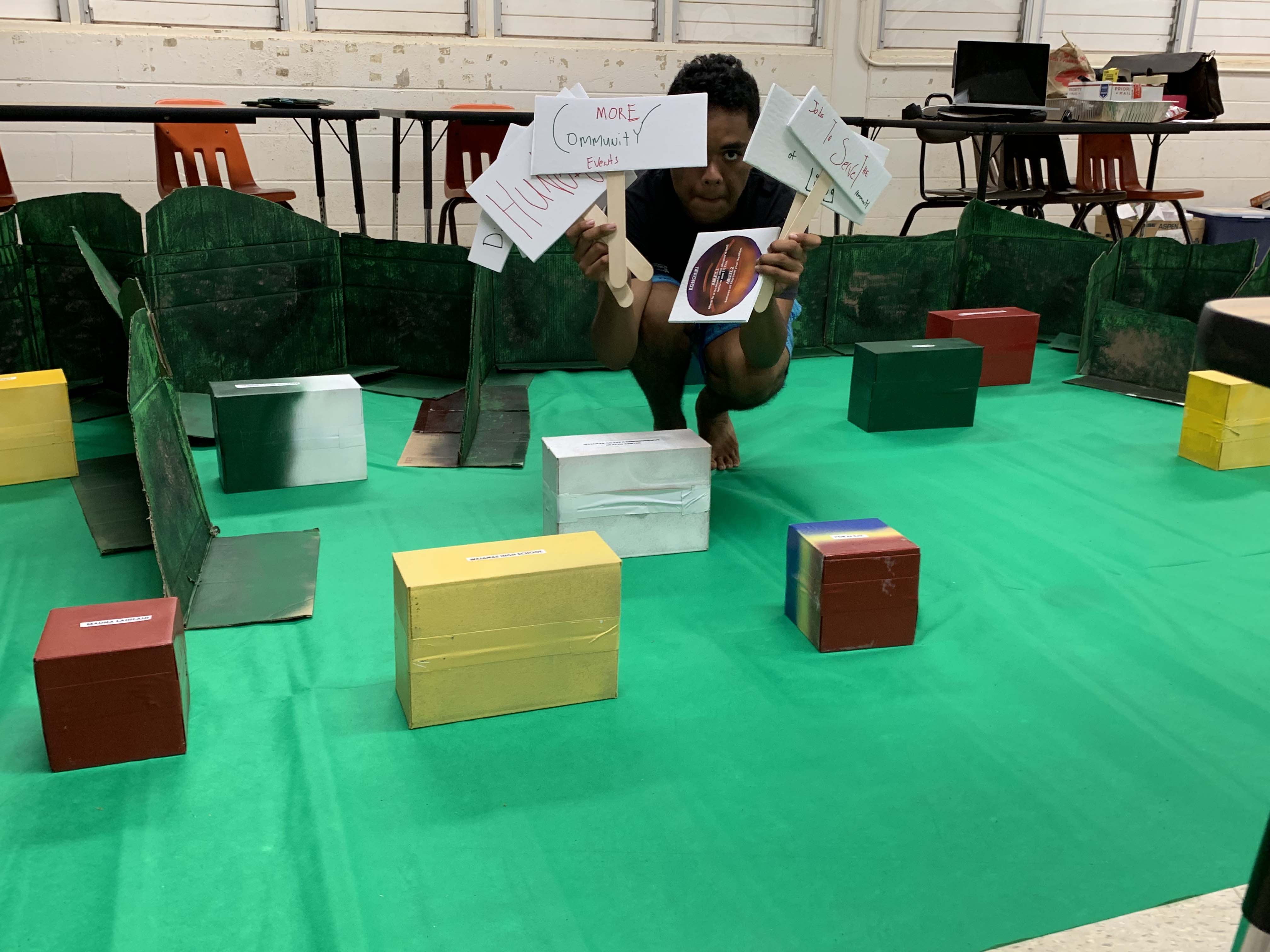
We decided to give each hero two abilities. The players could activate one ability per turn. This turned out to be a fantastic idea. It limited the choices players could have, but made each choice meaningful and successfully initiated interaction with other players.
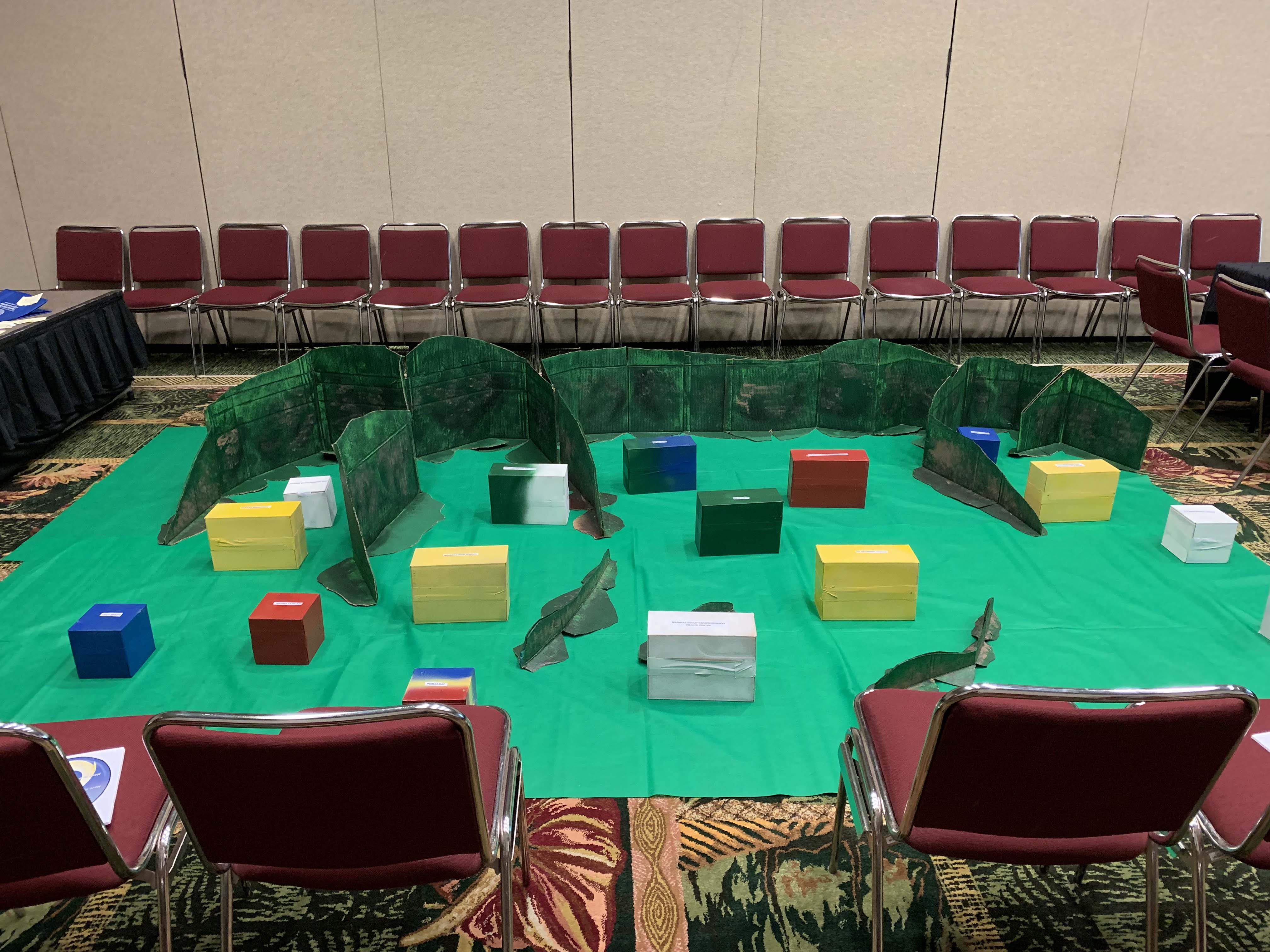
The presentation
We decided to do a semi-presentation along side the game. This would guide players through two turns of the game. Sort of like a dungeon master. I would display on a projector, a quick turn by turn overview, while reinforcing the intentions and rules of the game.
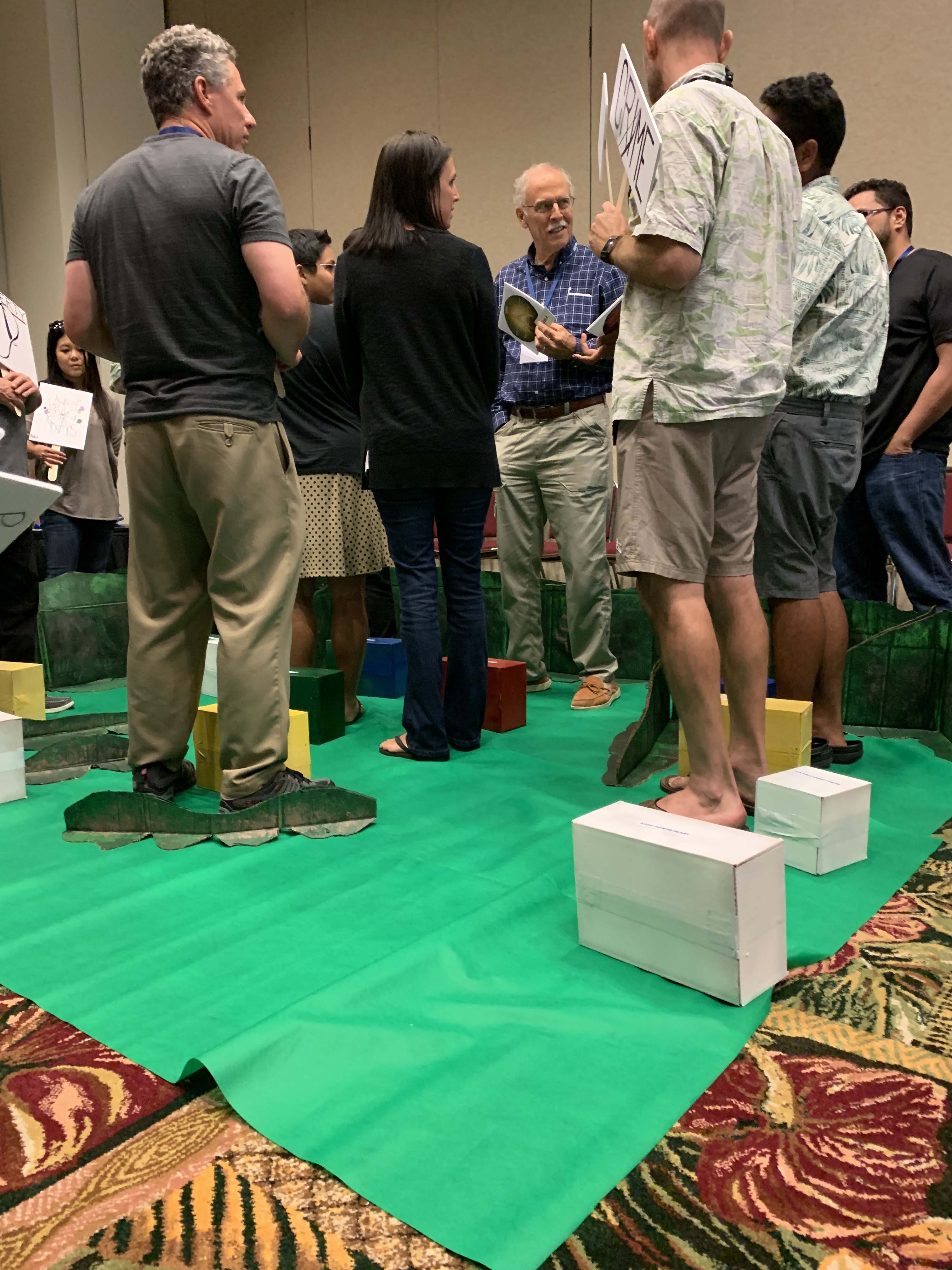
At the end of any turn (for a total of two turns), if the players are able to remove all Eha from the board, they win!